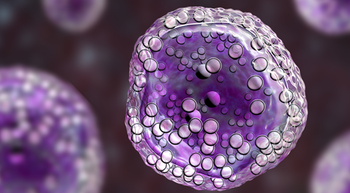
- June 2016
- Volume 10
- Issue 5
High-Tech, High-Touch Cancer Care
My dad remembers the days when he saw his doctor’s face during a visit. Now, he says, he sees his doctor’s back as his doctor taps on the keyboard of his electronic health record (EHR).
My dad remembers the days when he saw his doctor’s face during a visit. Now, he says, he sees his doctor’s back as his doctor taps on the keyboard of his electronic health record (EHR). He also notes that even when computer screens allow more of a face-to-face interaction, healthcare providers nonetheless “keep their noses on the screen and not me.” What’s happened to high-tech, high-touch healthcare? Have we lost the high-touch component?
There are experts who believe that we may have. They note the realities of high-tech care, which require us to focus our attention on machines and leave little time for us to focus on the patient. In fact, many clinicians will tell you that they spend more time entering data into a patient’s EHR than actual time with the patient. It’s no wonder that patients describe these visits as distanced and dehumanizing. There are some who argue, however, that EHRs don’t impede these interactions but rather enhance them.
Perhaps the answer lies in how clinicians use technology and how patients perceive how it’s used. When clinicians allow technology to dominate—or overtake—the interaction with a patient, the high-touch component of healthcare diminishes or is altogether absent. I’ve had patients tell me that physicians have “examined them” without ever touching them. Equipment was used to measure their vital signs; patients entered their review of systems on tablets, kiosks, or computers; and laboratory and imaging study results were displayed on a screen.
Patients sometimes experience similar lack of human interaction in the infusion area. When nurses focus on the bar code on the armband instead of the person wearing the armband, it’s not surprising that patients find this interaction impersonal and distancing. When nurses “nurse the infusion pump” instead of the patient, patients may feel as if they don’t exist.
So how do we keep the high-touch in high-tech healthcare? One strategy is to use technology strategically and engage the patient in its use. Patients should be able to view screens containing their health information during their visits, and contribute to their health records via patient portals before, during, and after their visits. Having patients actively involved in the content of their records by contributing to them has been shown to increase patient acceptance of EHRs. EHR screens need to be positioned so that clinicians can maintain eye contact with the patient throughout the visit. When clinicians have their backs to the patient, they miss the patient’s nonverbal responses to the information being conveyed.
Some healthcare providers (mostly older in age) are employing “scribes” who type and enter information during a patient’s visit. In fact, “medical scribe” is now a recognized job title, and there are several online and in-person training programs available. Medical scribes have been described as a “revolutionary concept in modern medicine,” and are touted to relieve the “clerical responsibilities that slow physicians down and take them away from patient care.” Medical scribes are essentially personal assistants to physicians, performing real-time documentation in the EHR, gathering information for patients’ visits, and partnering with the physician to deliver more efficient patient care.
Another approach to enhancing the high-touch component of healthcare is to engage in purposive or intentional conversations with patients. For example, at one oncology facility, when nurses pulled up a chair to the patient’s chair or bedside, sat down, and talked to the patient, patient satisfaction scores increased. Interestingly, patients were asked how long the nurses sat with them and their responses averaged 10-12 minutes, when in actuality, the nurses were clocked sitting with the patient for no more than 5-7 minutes. Not surprisingly, nurses’ job satisfaction increased, with many citing that the focused nurse—patient interaction time rekindled the true essence of nursing.
The bottom line is that technology must be tempered by humanism. High-tech, high-touch care is possible, but requires clinicians’ dedication to its use.
Lisa Schulmeister, MN, RN, ACNS-BC, FAAN is an oncology nursing consultant and editor-in-chief of Oncology Nursing News.
Articles in this issue
over 9 years ago
Tech Takeover: New Tools and Resources to Improve Cancer Careover 9 years ago
The Power of a Good Ideaover 9 years ago
Research Wrap: Nurses Share Their Tech Ideas at ONSover 9 years ago
Navigating "VIP" Patients With Cancer

















































































